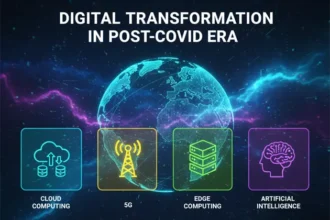Cybersecurity has never been straightforward. And because attacks change every day as attackers become more creative, defining cybersecurity properly and understanding what constitutes good cybersecurity is essential. Cybersecurity safeguards the data and integrity of computer assets that belong to or link to the network of an organization. It aims to protect those assets against all threat actors during a cyber-attack life cycle.
“Our co-founder, Aimei Wei, saw that her data science and data networking background was a good fit for solving the problems in cybersecurity. She recognized that most security tools are siloed, and as a result, there is too much data “noise” in too many separate interfaces for analysts to make quick decisions about spotting and addressing cyberattacks,” states Changming Liu, CEO & Co-Founder, Stellar Cyber. “Too much data means more work is needed to see the meaningful event signals and respond in a meaningful time to stop a breach.Aimei took a step back and re-thought how data is gathered and analyzed and came up with an integrated solution to address this problem, and that’s how Stellar Cyber was established in 2015. The Stellar Cyber founding team is comprised of technology entrepreneurs with diverse backgrounds in networking, cybersecurity, big data, and machine learning,” adds Changming Liu.
Cybersecurity safeguards the data and integrity of computer assets that belong to or link to the network of an organization. It aims to protect those assets against all threat actors during a cyber-attack life cycle.
Stellar Cyber’s industry-leading security infrastructure data collection, analysis, and automated anywhere detection and response (XDR) mechanisms improve productivity and empower security analysts to kill threats in minutes instead of days or weeks. By accepting, integrating, and evaluating data inputs from a variety of existing cybersecurity solutions under one intuitive interface, Stellar Cyber’s Open-XDR platform helps eliminate the tool fatigue and data overload often cited by security analysts. “Stellar Cyber’s Open-XDR platform is the only comprehensive security platform providing maximum protection of applications and data wherever they reside,” states Changming Liu.
A core set of apps should work together in the Open XDR platform. For example, if you have a SIEM, you still need network analysis, and user or entity behavior analysis to see the whole picture. Stellar Cyber’s Open XDR platform is well suited to customers who want to use the solutions they want, and help them sunset or decommission what they feel is no longer adding value to their security operations team. Additionally, Stellar Cyber takes the idea of “open” to mean that there should be an ecosystem of vendors that make it easy to build a best-of-breed solution – the organization has done that – with over 100 integrations so far, and a series of partnerships that add automated orchestration and response to the ability to go beyond just detection.
With each passing day and technical evolution, Stellar Cyber’s most significant advancement is the use of Artificial Intelligence and Machine Learning techniques to quickly inspect and compare data from various sources to produce actionable outcomes. Stellar Cyber uses AI techniques to aggregate and decode data from multiple security devices and sensors, and uses Machine Learning to enhance the ability of the system to identify and correct cyber threats over time.
The considerable challenges faced by people are that customers know they have a problem, but think they can’t afford to make a change. There are too many concerns – loss of best practices, loss of visibility. Stellar Cyber immediately shows value by integrating data from disparate security tools under one interface. Next, it uses its own sensors and agents to collect other data from blind spots that other systems miss. This helps customers achieve higher ROI from the systems they already have.
Stellar Cyber has worked with many businesses of varying sizes, and several problems come on the way while dealing with those firms. Stellar Cyber has helped many other organizations with their solutions and overcame the challenges. CyFlare, a top 100 global managed security services provider (MSSP) based outside of Rochester, New York. The company wholesales managed security services to small and mid-sized VARs, MSPs, and MSSPs, and brings value to its customers by delivering Security Operations Center (SOC) as-a-service functionality that’s comprehensive, cost-effective, and easy to deploy. CyFlare relies on Stellar Cyber’s Starlight solution as the core of its SOC-as-a-service offering. The Stellar Cyber platform unifies more than a dozen different security tools and increases their value by correlating their findings and presenting them on a single interface.
In another instance, EBSCO Industries, based in Birmingham, Alabama, is one of the largest privately-held companies in the United States. It owns or helps manage roughly 40 small-to-medium businesses across a diverse group of industries, including publishing, manufacturing, real estate, information services, and insurance. As incidents of cyberattacks against SMBs began to grow, EBSCO’s board of directors wanted to tighten its security posture, and CISO John Graham chose Stellar Cyber as the solution for building an effective Security Operations Center. Stellar Cyber pulls together EBSCO’s disparate sets of security tools and presents their findings under a single, intuitive interface so analysts can quickly spot and correct issues.
Stellar Cyber is continuously evolving in such a way as to compare smaller incidents that look normal across the entire surface of the attack and using existing resources to paint a broader image of a company’s attack surface. The principal aim of the Stellar Cyber is to add more and more AI so that it can see more and more sophisticated threats quicker than any other tool to ensure optimal security for consumers from cyberattacks wherever their data and applications reside.










